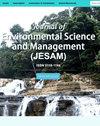Insights from Early Mathematical Models of 2019-nCoV Acute Respiratory Disease (COVID-19) Dynamics
IF 0.3
4区 环境科学与生态学
Q4 ENVIRONMENTAL SCIENCES
引用次数: 60
Abstract
In December 2019, a novel coronavirus (SARS-CoV-2) has been identified to cause acute respiratory disease in humans. An outbreak of this disease has been reported in mainland China with the city of Wuhan as the recognized epicenter. The disease has also been exported to other countries, including the Philippines, but the level of spread is still under control (as of 08 February 2020). To describe and predict the dynamics of the disease, several preliminary mathematical models are formulated by various international study groups. Here, the insights that can be drawn from these models are discussed, especially as inputs for designing strategies to control the epidemics. Proposed model-based strategies on how to prevent the spread of the disease in local setting, such as during social gatherings, are also presented. The model shows that the exposure time is a significant factor in spreading the disease. As crowd density increases, the higher the chance an infected person could infect other people. The attendees of the social gathering should have effective protection or preventive measures (e.g., administrative and engineering controls) to minimize further disease transmission.2019-nCoV急性呼吸道疾病(COVID-19)动态早期数学模型的启示
2019年12月,一种新型冠状病毒(SARS-CoV-2)被发现会导致人类急性呼吸道疾病。据报道,这种疾病在中国大陆爆发,武汉市是公认的震中。该疾病也已出口到其他国家,包括菲律宾,但传播水平仍在控制之中(截至2020年2月8日)。为了描述和预测疾病的动态,各个国际研究小组制定了几个初步的数学模型。在这里,我们讨论了可以从这些模型中得出的见解,特别是作为设计控制流行病策略的输入。还提出了关于如何在当地环境(如社交聚会期间)防止疾病传播的基于模型的策略。该模型表明,暴露时间是疾病传播的一个重要因素。随着人群密度的增加,感染者感染其他人的几率就越高。社交聚会的参与者应采取有效的保护或预防措施(如行政和工程控制),以尽量减少疾病的进一步传播。
本文章由计算机程序翻译,如有差异,请以英文原文为准。
求助全文
约1分钟内获得全文
求助全文
来源期刊

Journal of Environmental Science and Management
ENVIRONMENTAL SCIENCES-
CiteScore
0.90
自引率
0.00%
发文量
10
审稿时长
2 months
期刊介绍:
The Journal of Environmental Science and Management (JESAM) is an international scientific journal produced semi-annually by the University of the Philippines Los Baños (UPLB).
JESAM gives particular premium to manuscript submissions that employ integrated methods resulting to analyses that provide new insights in environmental science, particularly in the areas of:
environmental planning and management;
protected areas development, planning, and management;
community-based resources management;
environmental chemistry and toxicology;
environmental restoration;
social theory and environment; and
environmental security and management.
 求助内容:
求助内容: 应助结果提醒方式:
应助结果提醒方式:


